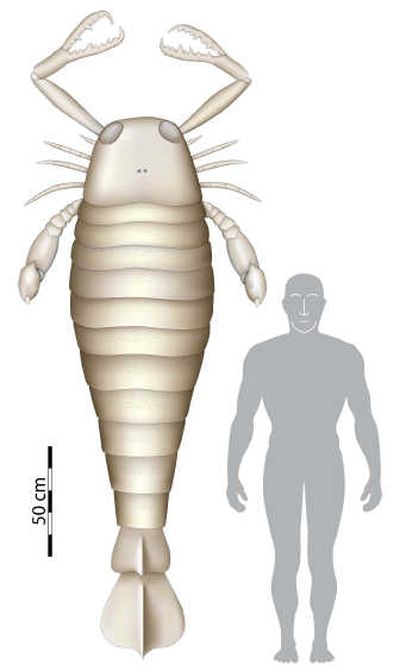Fossilized claw evidence of huge ancient scorpion

One of its claws might feed an entire family, but this sea creature would be more likely to eat the family.
British researchers said Tuesday that they have discovered an 18-inch-long fossilized claw of an ancient sea scorpion that would have been 8 feet long, making it the largest arthropod ever discovered.
“We knew the sea scorpions were among the largest creepy-crawlies ever, but we didn’t realize just how big they could get,” said paleontologist Simon J. Braddy of the University of Bristol, the primary author of the report in the journal Biology Letters.
Sea scorpions became extinct about 250 million years ago, but they were precursors of modern land-based scorpions. Smaller varieties are common in the fossil record, and evidence suggests that they ventured onto land for brief forays.
But “there is no way this thing could have crawled out onto land,” Braddy said. “This is simply too spindly. Its legs would break under its own weight.”
And what does an 8-foot sea scorpion eat?
Pretty much anything it wants to, Braddy said. The creature would have been the dominant predator in its environment, feasting on armored fish, early vertebrates, other arthropods and smaller sea scorpions.
The lack of predation might have been one factor that allowed the scorpions and other ancient species to grow so large, he said. The high oxygen content of Earth’s atmosphere then – 35 percent compared with 21 percent today – also probably was a factor.
But the sea scorpions were doomed. When vertebrates evolved to large sizes, “the tables were turned,” Braddy said.
“The only way they could cope was by downsizing and hiding away. That’s why all of them today are very small.”